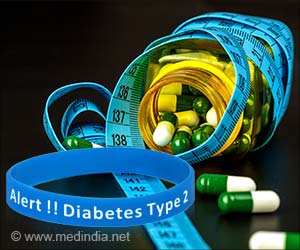Battling with the emerging epidemic of Diabetes in our country, are we ready for newer alternatives? Estrogen therapy offers promising results for treatment of cdf.
- Complications of diabetes include chronic non-healing wounds and ulcers commonly referred to as a diabetic foot
- Apart from conventional treatment options that include blood glucose control using insulin and oral hypoglycemic medications, estrogen therapy offers a promising new role in the treatment of diabetic foot
- Estrogen therapy helps in faster wound healing recovery and serves a promising role
Metabolic non-communicable disease health report of India: the ICMR-INDIAB national cross-sectional study (ICMR-INDIAB-17)
Go to source). Of the various chronic complications, long standing uncontrolled diabetes can result in diabetic foot ulcer (DFU). With an annual incidence of 2.4–2.6%, prevalence of 4–10% and a significant rate of recurrence of more than 50% after three years, DFU and its complications constitute an alarming public health problem. Diabetic foot is also leading cause of hospitalization, amputation (removal of the leg from the body) and death in diabetic patients (2✔ ✔Trusted Source
Current Therapeutic Strategies in Diabetic Foot Ulcers
Go to source).
Causes and Pre-Existing Treatments of Diabetic Foot
Diabetes and persistent high body glucose affects the immunity along with damage to the nerves and blood vessels of the body. This translates as neuropathies (damage to nerves) and peripheral arterial disease (damage to blood vessels) which along with co-existing infection lead to Diabetic foot. Current therapies and management strategies aim at prevention and treatment of these processes.Estrogen and its Role in Diabetic Wound Healing
Estrogen is a steroid hormone associated with the female reproductive organs and is responsible for the development of the female sexual characteristics. Evidenced clinical and preclinical data suggests that estrogen seems to play an important potential protective role in improving and modulating glucose balance in the body (3✔ ✔Trusted SourceThe Role of Estrogen in Insulin Resistance
Go to source).
Research suggests that elderly males have a higher incidence of chronic non-healing wounds, correlating with reduced levels of estrogen in the body. Additionally, topical estrogen has been shown to be beneficial in accelerating cutaneous wound healing in both genders alike (4✔ ✔Trusted Source
The effect of estrogen on diabetic wound healing is mediated through increasing the function of various bone marrow-derived progenitor cells
Go to source).
Various studies on animal models have proved that topical estrogen application to the chronic diabetic wound reduced the wound area, promoted new skin growth (re-epithelialization)and also lead to development of new blood supply to the affected skin (angiogenesis) thus helping in healing. This takes place due to various hormonal signaling at the cellular level which helps in new tissue growth. The exact mechanism however still remains unclear and warrants further research and evidence in humans as well (5✔ ✔Trusted Source
Topical estrogen application promotes cutaneous wound healing in db/db female mice with type 2 diabetes
Go to source).
Just like any other medication, estrogen replacement also has its set of risks and benefits. When given long term for chronic disease prevention, it can lead to deleterious effects on the breast and uterus. Estrogen therapy also predisposes to an increased risk of heart attack, stroke and deep vein thrombosis. These are critical future directions that will lay the foundation for improved therapies for estrogen use and diabetes (6✔ ✔Trusted Source
Estrogen
Go to source).
In conclusion, estrogen therapy seems promising for wound care management among patients with diabetes. However, these specific actions as well as the underlying mechanisms need more studies to be approved as primary treatment options for diabetic foot.
- Metabolic non-communicable disease health report of India: the ICMR-INDIAB national cross-sectional study (ICMR-INDIAB-17) - (https://www.thelancet.com/journals/landia/article/PIIS2213-8587(23)00119-5/fulltext)
- Current Therapeutic Strategies in Diabetic Foot Ulcers - (https://www.ncbi.nlm.nih.gov/pmc/articles/PMC6915664/)
- The Role of Estrogen in Insulin Resistance - (https://ajp.amjpathol.org/article/S0002-9440(21)00245-5/fulltext)
- The effect of estrogen on diabetic wound healing is mediated through increasing the function of various bone marrow-derived progenitor cells - (https://pubmed.ncbi.nlm.nih.gov/30064832/)
- Topical estrogen application promotes cutaneous wound healing in db/db female mice with type 2 diabetes - (https://journals.plos.org/plosone/article?id=10.1371/journal.pone.0264572)
- Estrogen - (https://www.ncbi.nlm.nih.gov/books/NBK538260/)
Source-Medindia
















